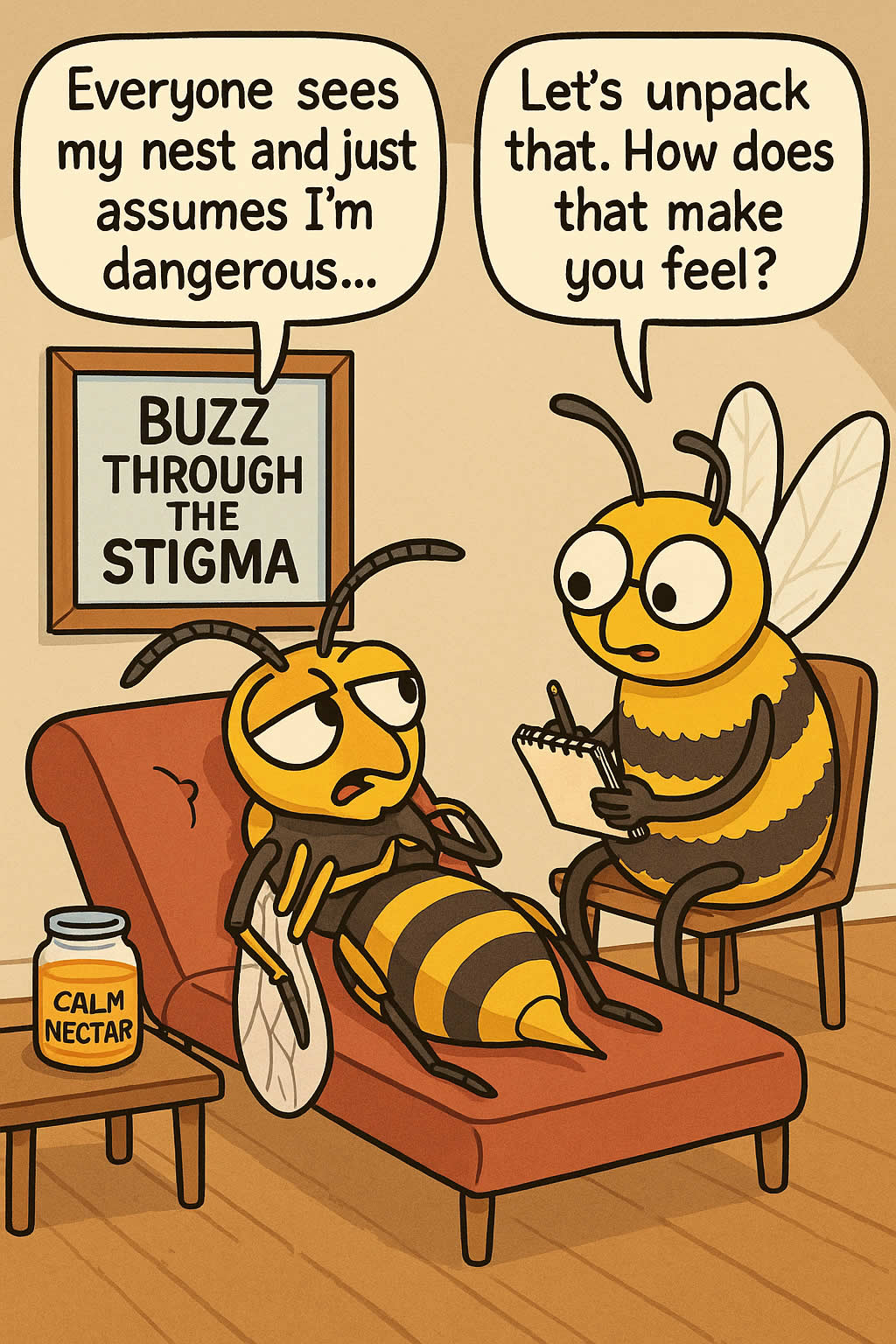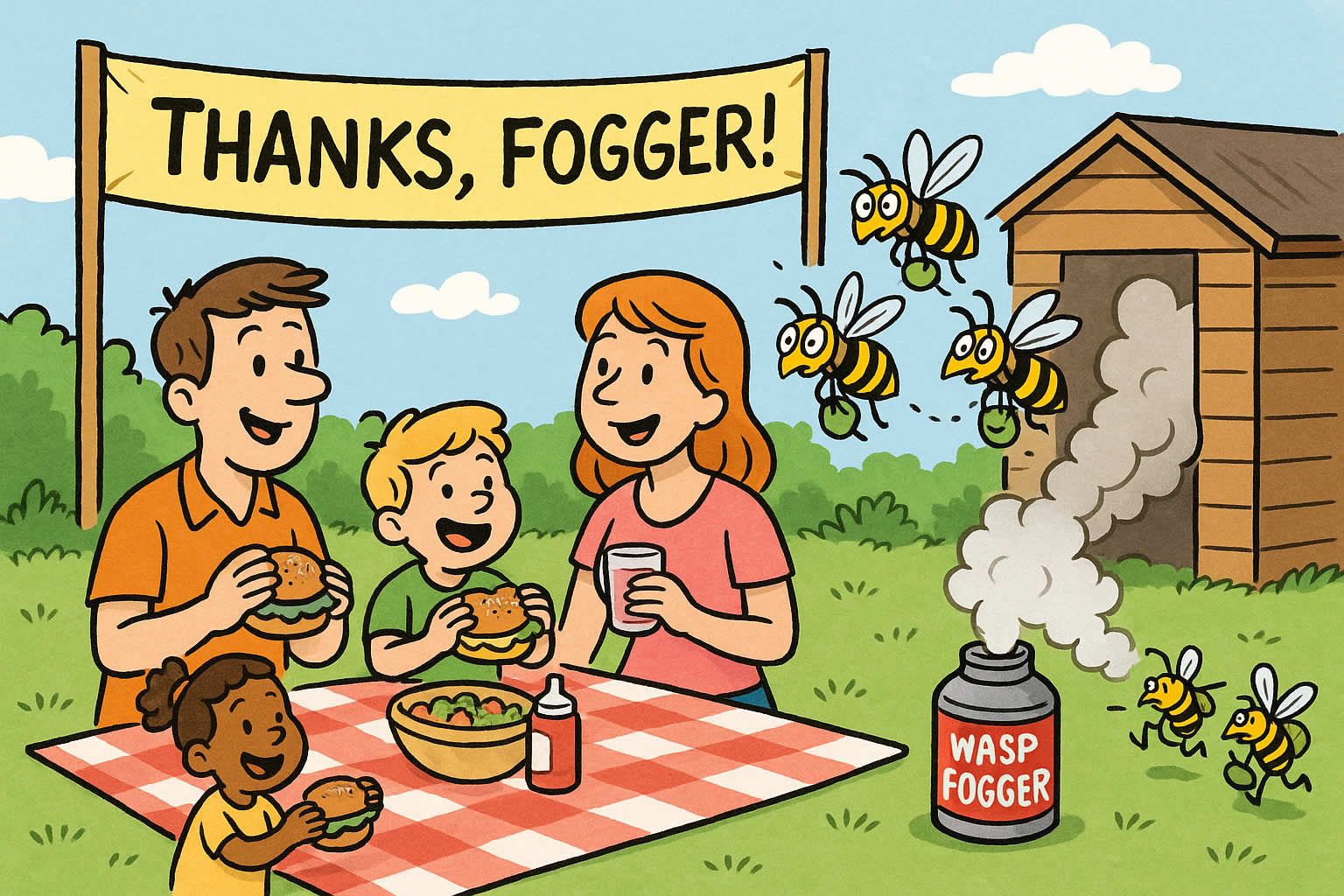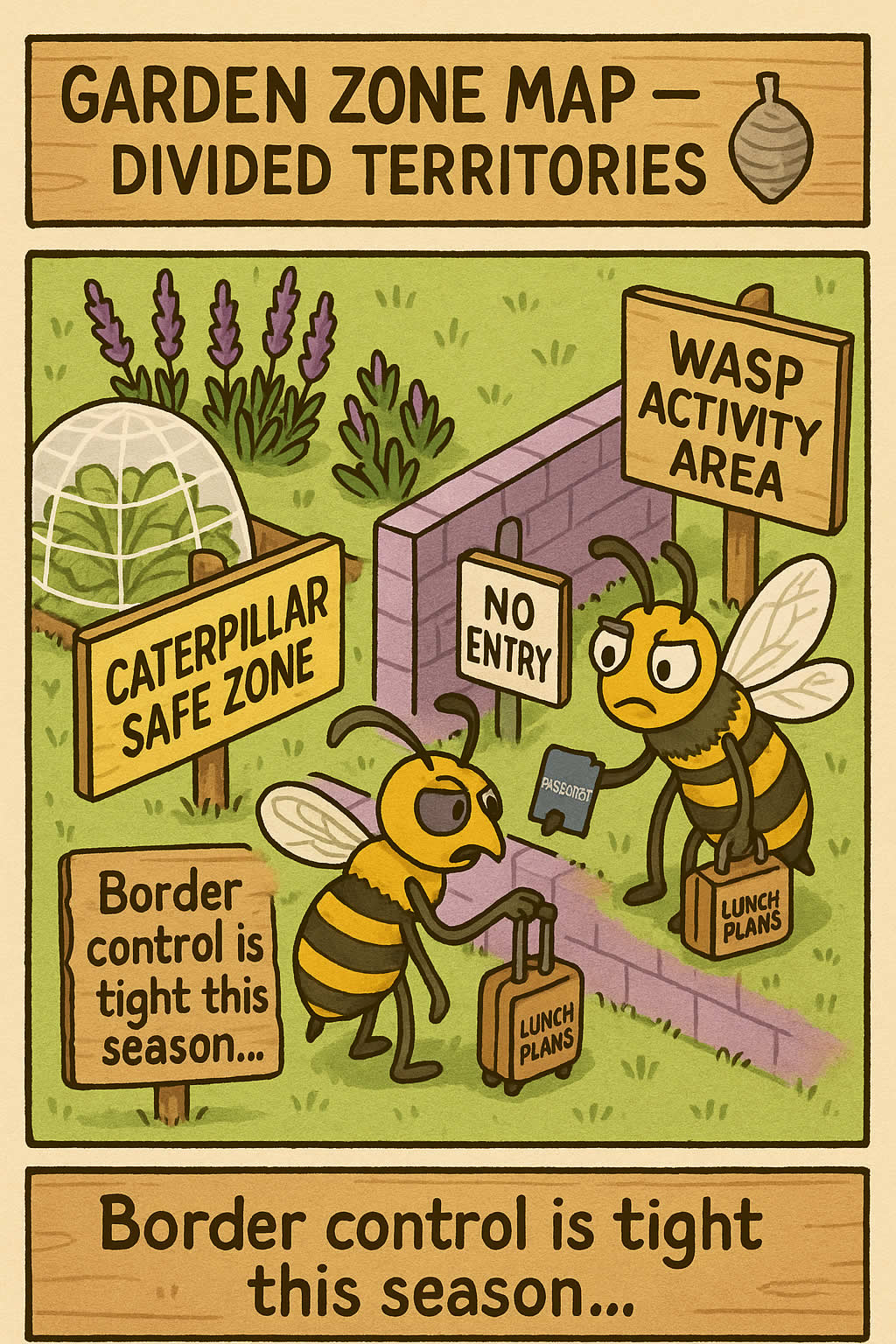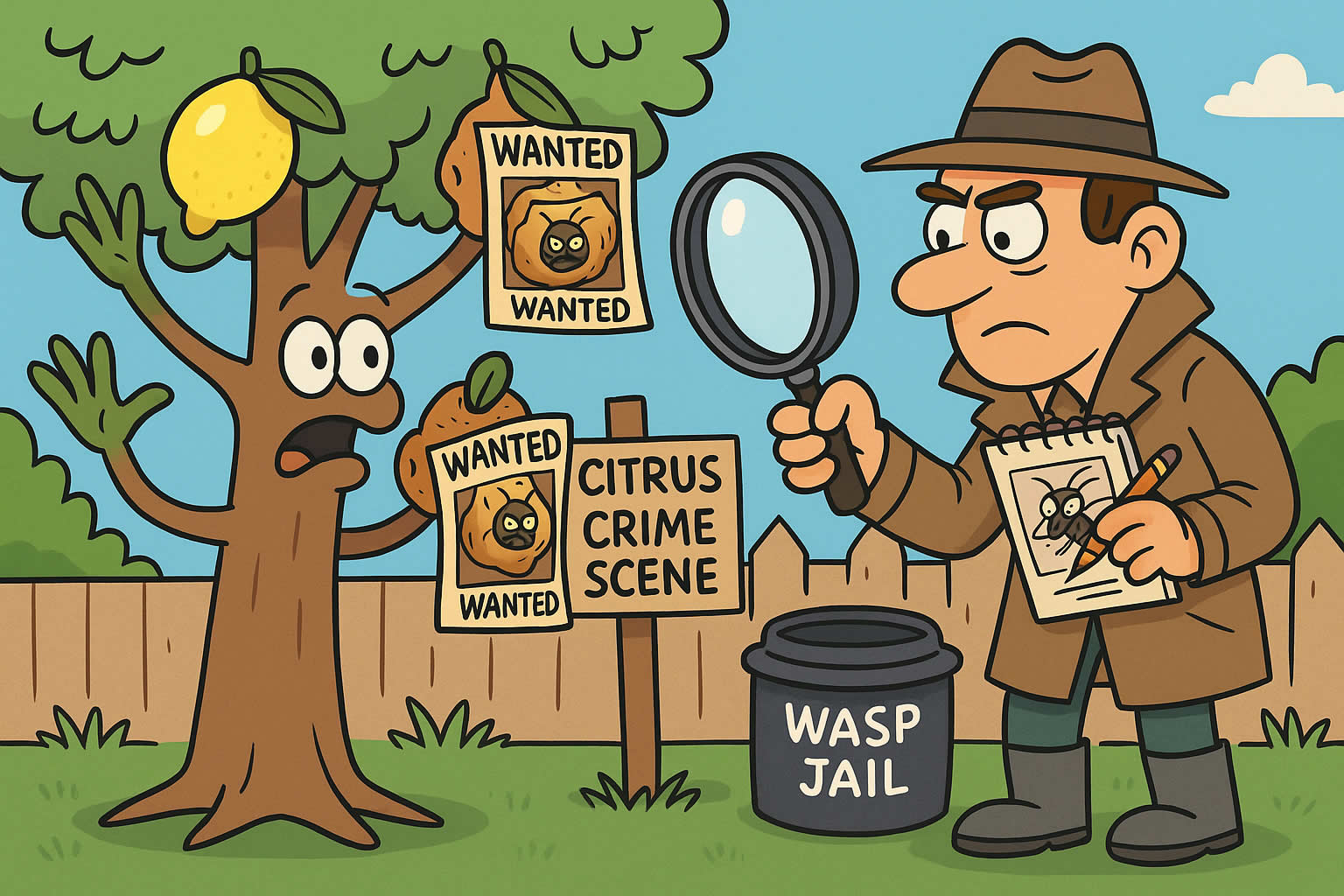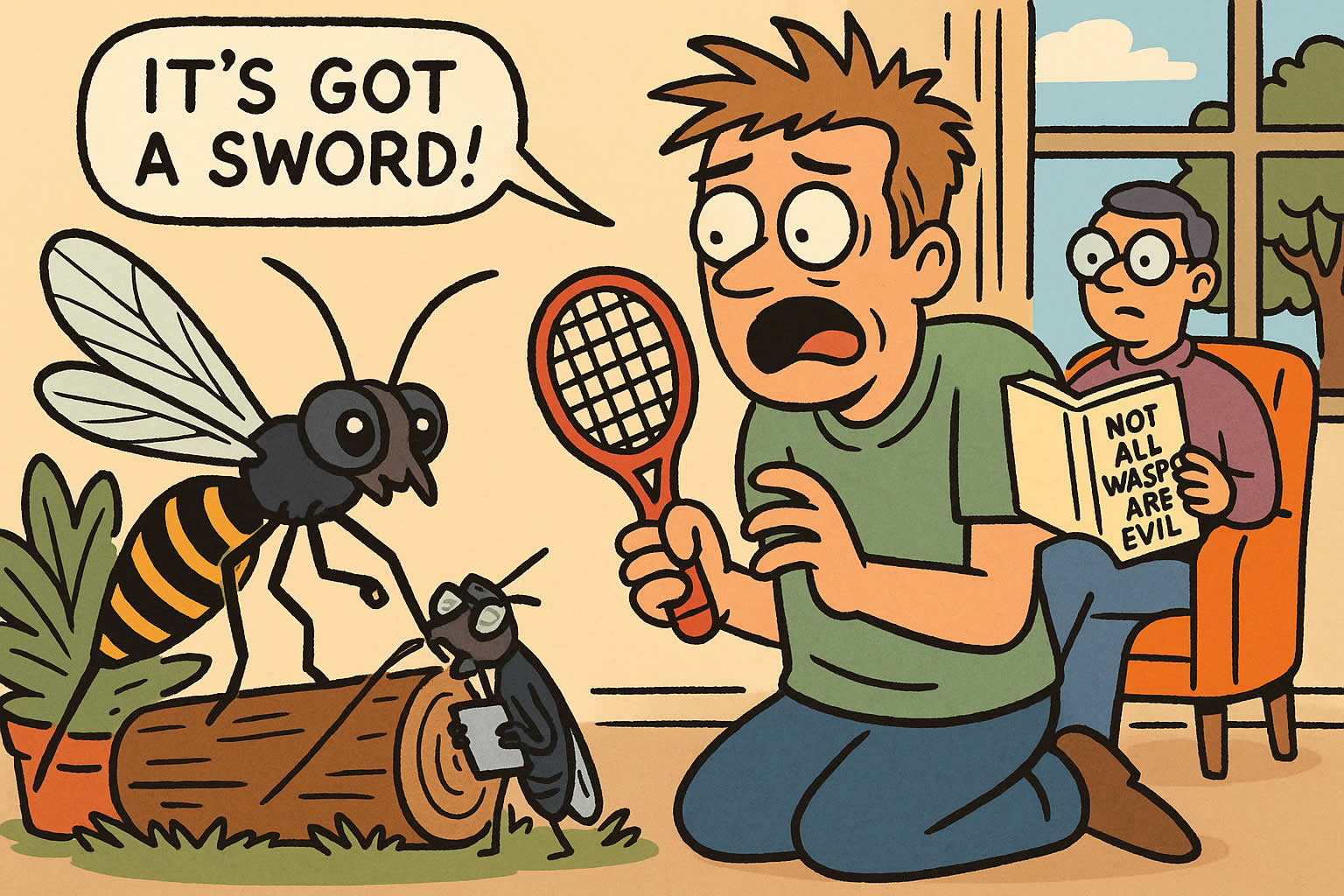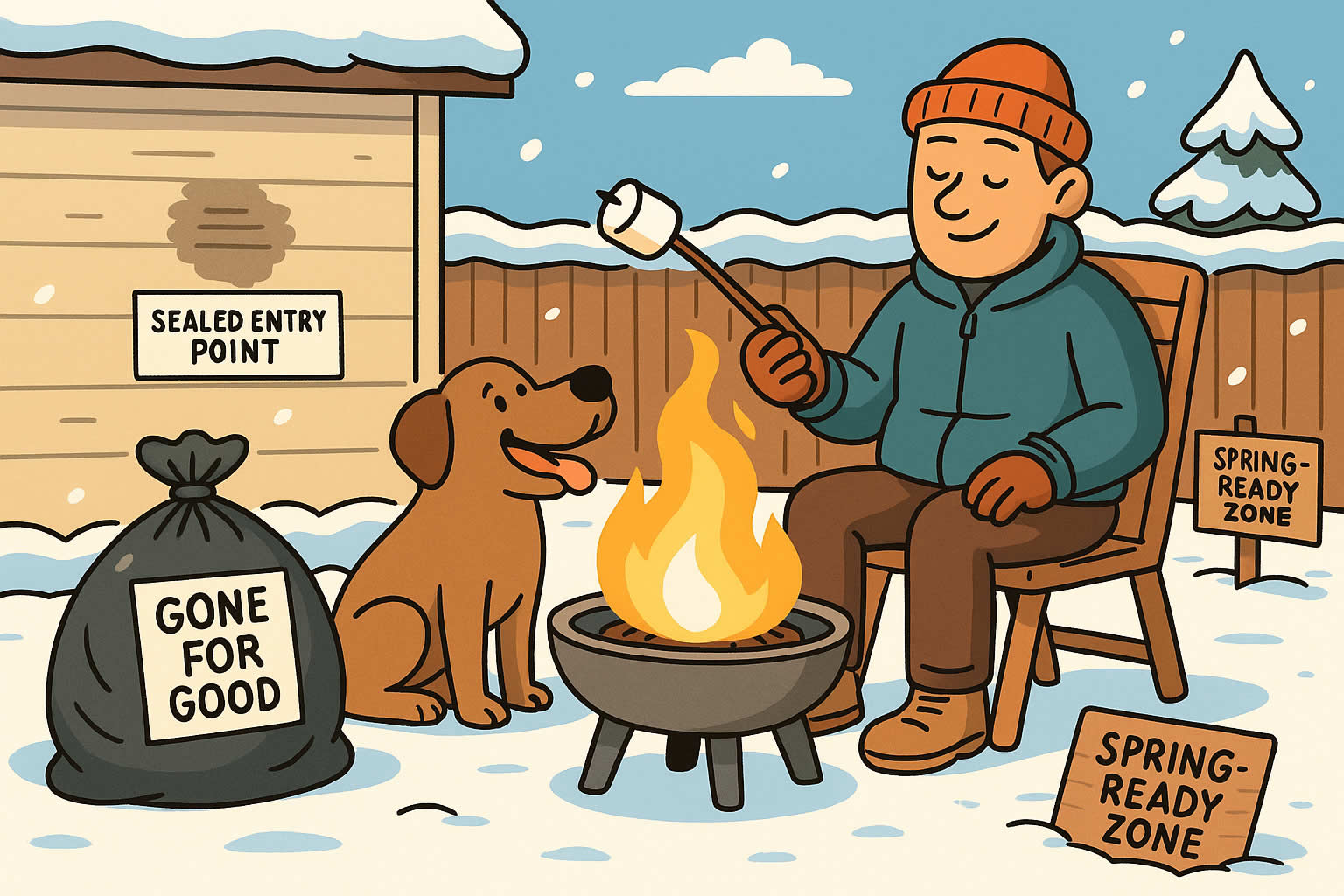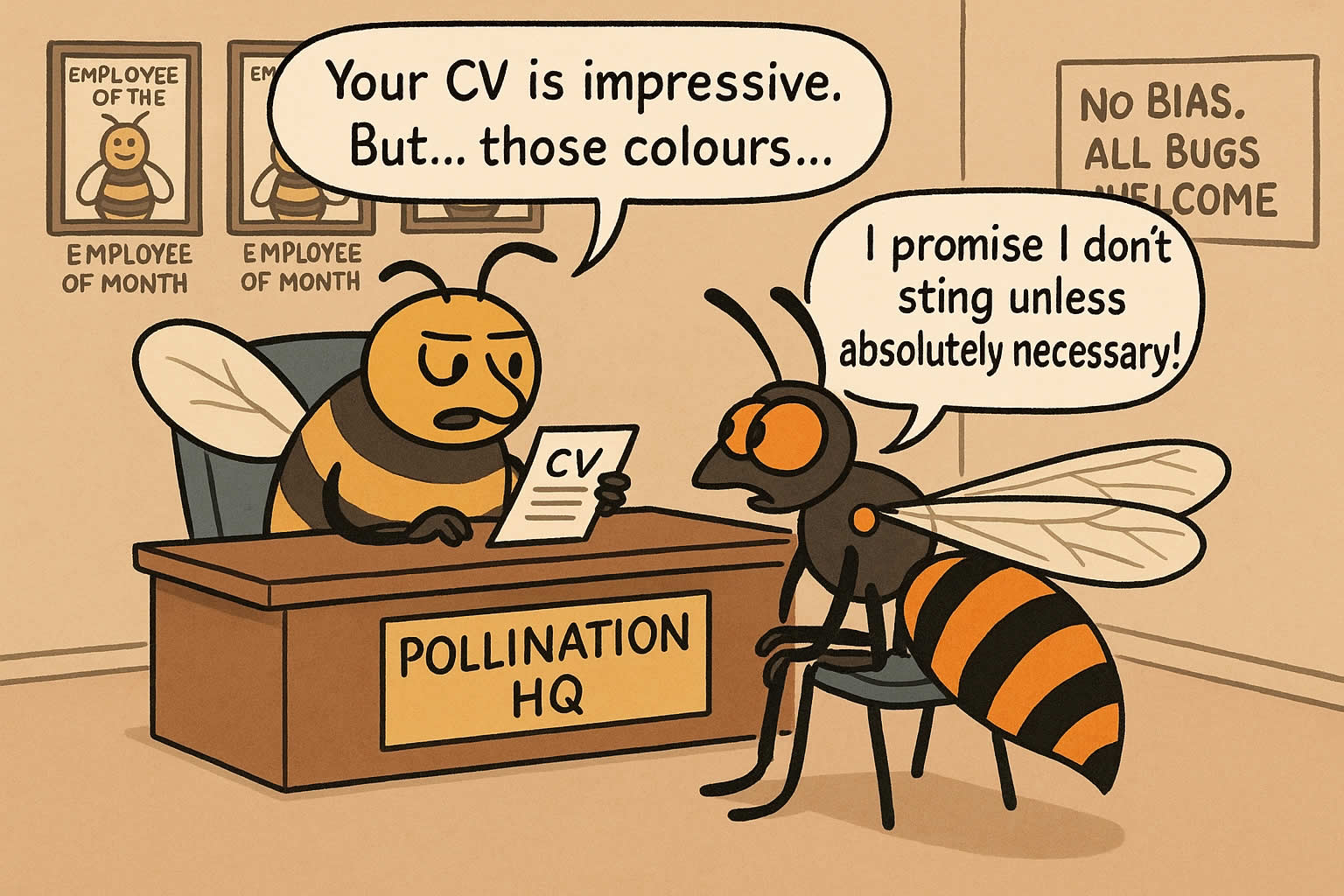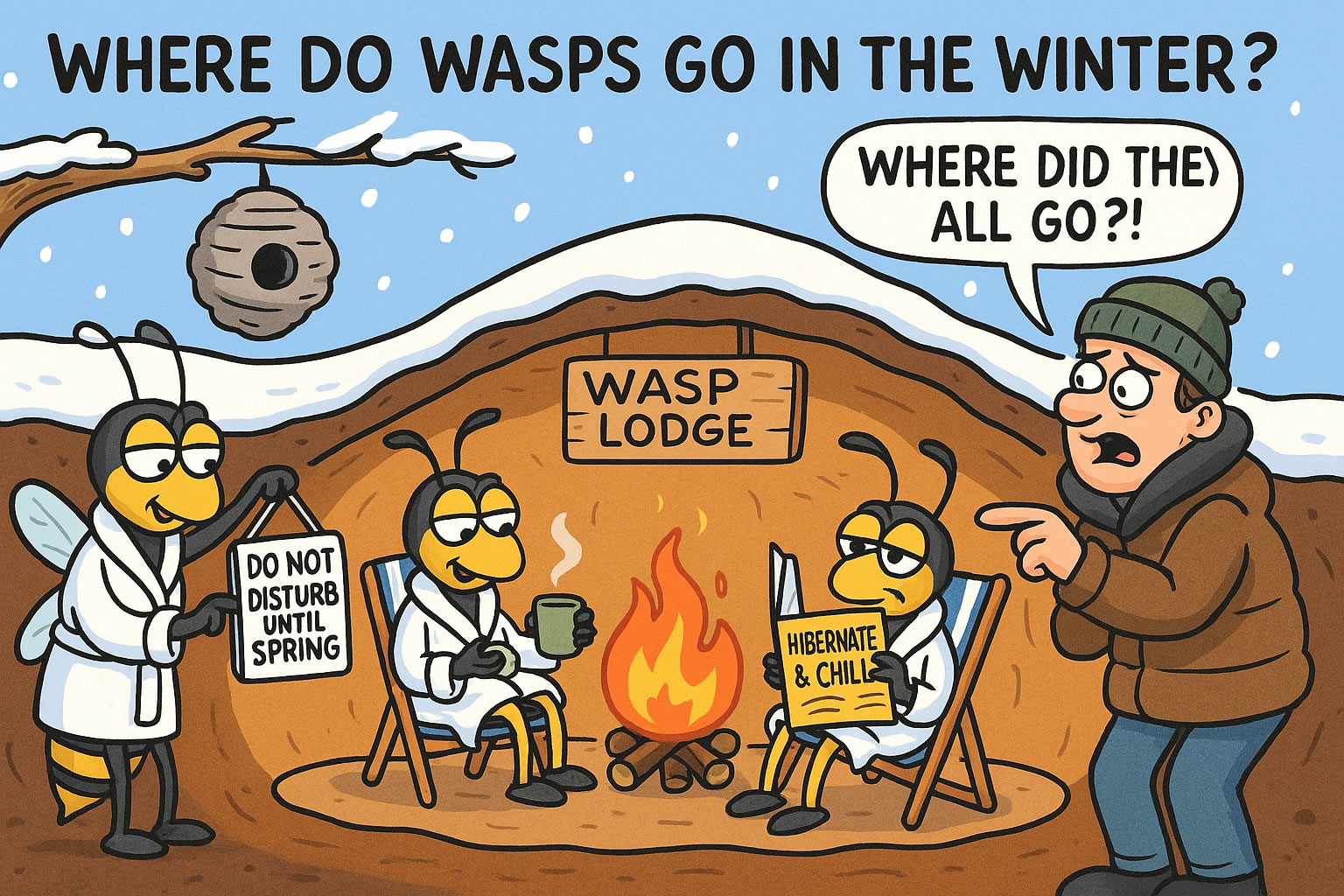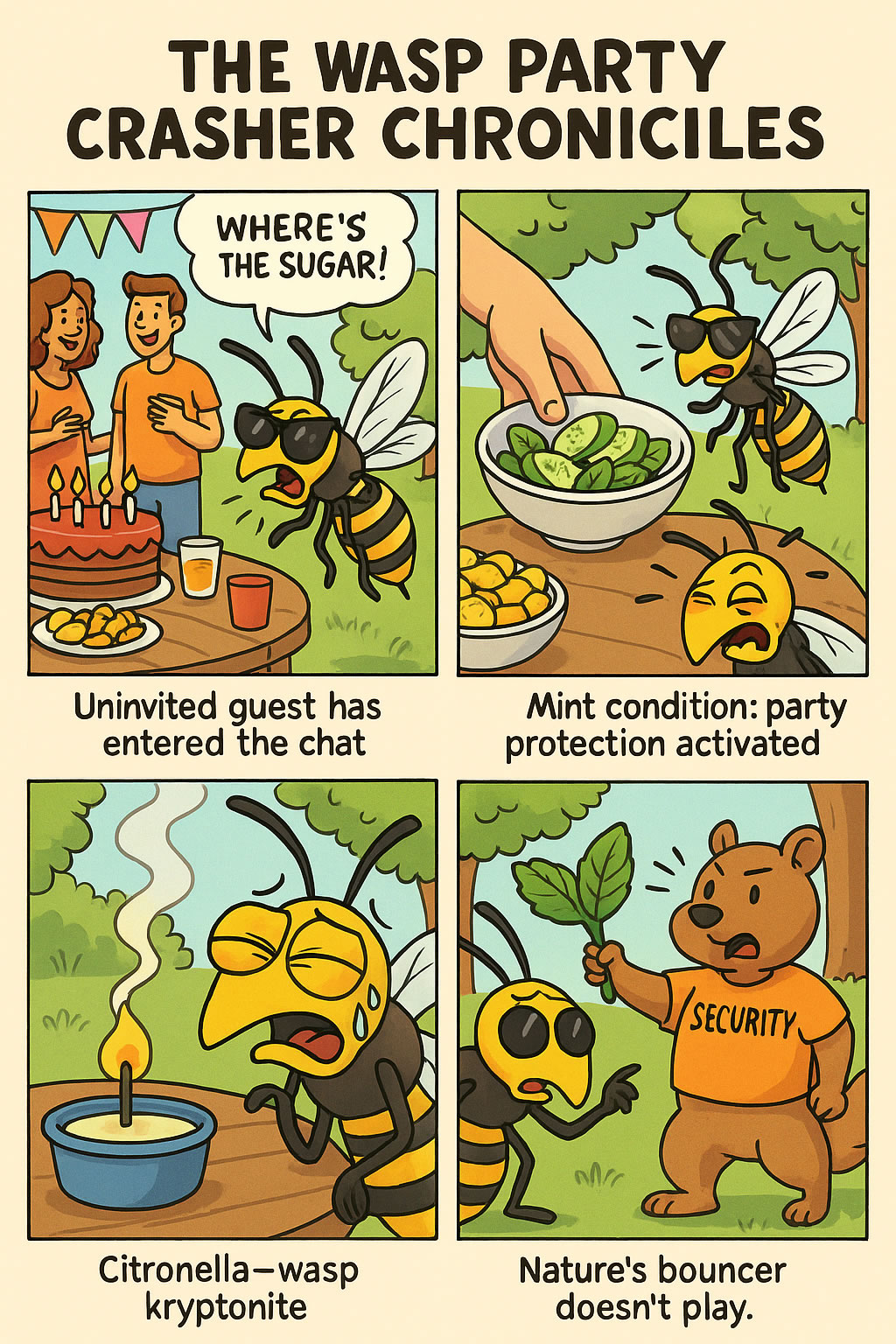Related Queries
ToggleYou might have seen one before without realising what it was. Long, narrow body. Dangling legs. A bit like a wasp but not quite like the ones you’re used to swatting away at a picnic. If you’ve spotted one building a papery nest under your roofline or hanging around the shed, you’ve probably asked yourself—what is that thing? And should I be worried?
That insect is likely a paper wasp. They’re common across many parts of the UK and the world, and they often show up in the warmer months. The name sounds harmless enough, but their appearance and behaviour can make people nervous.
Let’s look at what paper wasps actually are, what makes them different from other wasps, whether they’re a threat, and what you should do if they’ve set up camp near your home.
What exactly is a paper wasp?
A paper wasp is a type of wasp that builds nests from chewed plant fibres and wood. When they mix these fibres with their saliva, it forms a soft, greyish paper-like material. That’s where the name comes from.
They’re part of the Polistinae subfamily. There are several species that fall under the “paper wasp” label, and while their colours vary a bit, most of them have slender bodies with long legs that dangle in flight. You might see reddish-brown, black, orange, or yellow patterns across the body. They’re not as chunky as hornets, and they’re not as short and rounded as the more familiar common wasps you might find raiding bins.
The nest they build is the big giveaway. It looks like an open umbrella made of thin grey paper. You’ll often find these nests hanging from sheltered areas like eaves, decking beams, porch roofs, or even inside garden sheds.
Are paper wasps aggressive like other wasps?
Not usually. This is one of the biggest misunderstandings about paper wasps. They do have stingers, and they can defend their nests—but they’re not out looking for a fight.
Paper wasps are less aggressive than the common yellowjacket wasps you might see around bins or beer bottles. They don’t tend to chase people or sting unless they feel directly threatened. In fact, many people live near paper wasp nests without even knowing it, because these wasps go out of their way to avoid unnecessary conflict.
Still, if you get too close to the nest or disturb it, they will defend it. That’s instinct. It’s best to give the nest a bit of space if you notice one forming.
Why are paper wasps in my garden or near my home?
Paper wasps like warmth, shelter, and access to food. Your home offers plenty of great spots to build a nest—under eaves, inside hollow fence posts, or behind wall cladding. Your garden provides flowers, nectar, and small insects that they feed to their young.
In spring, a fertilised queen will look for a spot to build a new nest. She’ll start it off on her own and raise the first brood of workers. After that, the workers take over the construction and foraging duties.
You might notice more activity during late spring and early summer as the nest grows. In most cases, the nest doesn’t survive past the first frost.
Do paper wasps sting?
Yes, they can sting—but again, they’re not quick to use it. Their sting is painful and can cause swelling, especially if you’re allergic. Unlike bees, paper wasps can sting more than once, since their stinger doesn’t get stuck in the skin.
If you disturb the nest or swing at one that gets too close, you increase the chances of being stung. But if you move calmly and don’t threaten them, they’ll likely leave you alone.
For people who are allergic to wasp stings, any sting—paper wasp or not—can be serious. If that’s the case for you, take all wasps seriously and consult a professional for nest removal.
How do paper wasps help the environment?
Here’s where things get interesting. Paper wasps aren’t just pests—they’re actually quite helpful.
They play a role in natural pest control. They feed on caterpillars, beetle larvae, flies, and other insects that damage plants. If you’re a gardener, they can be allies. You might not want a nest near your door, but having them in the garden could keep certain pests in check without the need for chemical sprays.
They also help with pollination. Adult paper wasps feed on nectar, so they visit flowers and move pollen from one bloom to another. They’re not as efficient as bees, but every bit helps—especially when bee populations are under pressure.
So even though they can be a bit unnerving to have around, paper wasps aren’t just surviving—they’re contributing.
How do you tell if it’s a paper wasp or something else?
There are a few key features that make paper wasps stand out:
- Long legs that dangle when flying
- Narrow waist and sleek, slender body
- Open, umbrella-shaped nest with exposed hexagonal cells
- Colour patterns vary by species, but often a mix of reddish-brown, black, orange, or yellow
If the nest is hanging out in the open and looks like grey paper, it’s probably a paper wasp. Hornet nests are usually larger and more enclosed. Yellowjacket wasps tend to nest in cavities like wall voids or underground, and their nests are harder to spot early on.
Should you remove a paper wasp nest?
It depends on where it is. If the nest is in a high-traffic area—like near your front door, children’s play area, or shed entrance—then it might be worth removing, especially if you’ve had reactions to stings in the past.
But if the nest is in a quiet corner of the garden, under a gutter, or somewhere you don’t go often, you could leave it alone. Paper wasps won’t reuse the same nest the following year. Once winter hits, the colony dies and the nest gets abandoned.
If you do choose to remove it, don’t do it during the day. Wasps are most active in daylight and become defensive if they feel under attack. If you attempt removal, wait until evening when they’re less active—or better yet, call a licensed pest control professional.
How can you prevent paper wasps from nesting near your home?
There are a few simple steps you can take early in the season:
- Seal cracks and gaps around doors, windows, rooflines, and vents
- Check sheds and garages in spring for small nests starting to form
- Install fine mesh screens over vents and open areas
- Use decoy wasp nests, which can discourage new queens from building nearby
- Avoid leaving sugary drinks or food out in the open, especially in late summer
Early prevention is the easiest route. A queen building the first few cells of a nest is much easier to relocate than a full-sized colony of workers later on.
Can paper wasps cause damage to your home?
Not directly. Their nests are made of paper and don’t chew into structures like carpenter bees or rodents might. But if the nest is left for a long time in a humid spot, it could stain surfaces or attract other pests after the wasps leave.
The real concern isn’t structural damage—it’s the chance of being stung if the nest is in a spot you use often. That’s why placement matters more than the wasps themselves.
How long do paper wasps live?
The colony usually lasts one season. A single queen starts the nest in spring. Her first batch of workers takes over by early summer, and the colony peaks around late summer or early autumn.
By the time the weather turns cold, the workers and males die off. Only newly-mated queens survive, hiding away in sheltered spots over winter to start fresh in spring.
The nests aren’t reused, so even if you leave one in place, it won’t become a problem the following year.
So, should you be worried about paper wasps?
That depends on how close they are to your day-to-day life. If they’re hanging out in a quiet corner of your garden and not bothering anyone, there’s really no need to worry. They’re part of nature, and in many ways, they’re doing you a favour by keeping other pests in check.
But if the nest is close to your front door, your children’s play area, or somewhere you walk past every day, then yes—it might be time to think about removal. Not because they’re aggressive, but because accidental run-ins can happen.
Paper wasps have been unfairly judged at times. Their slim bodies and stingers make them look like trouble, but they’re more focused on survival than conflict. If you understand what they’re doing, and where they’re nesting, you can make a choice that works best for your home and your peace of mind.
So next time you see one building a nest from scratch, take a second before you panic. It might be doing more good than you think.
Rodent Removal Cheshire – Pest Control Staffordshire – Pest Control Hampshire
